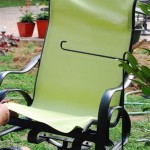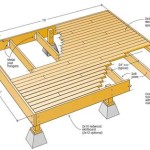Patio Design Ideas With Pavers
Pavers offer a versatile and durable solution for creating attractive and functional patios. They are available in a wide array of materials, colors, shapes, and sizes, enabling homeowners to customize their outdoor living spaces to reflect their personal style and architectural preferences. The installation process, while requiring careful preparation, results in a patio that can withstand the elements and provide years of enjoyment.
The visual appeal of a paver patio lies not only in the material chosen but also in the design and layout. Thoughtful planning is crucial to ensure that the patio complements the surrounding landscape and meets the specific needs of the homeowner. This includes considering the size and shape of the patio, the intended uses, and the overall aesthetic. Furthermore, proper installation is paramount to prevent settling, cracking, and other issues that can compromise the patio's structural integrity and appearance.
Selecting the right paver material is a key decision, as it will influence the patio's durability, aesthetic, and maintenance requirements. Common paver materials include concrete, brick, natural stone (such as flagstone, travertine, and bluestone), and interlocking pavers. Each material offers distinct advantages and disadvantages in terms of cost, appearance, and performance. Careful consideration should be given to the local climate, the expected traffic, and the desired lifespan of the patio when making this selection.
Considerations for Paver Material Selection
Concrete pavers are a popular choice due to their affordability, versatility, and durability. They are available in a wide range of colors, shapes, and textures, making it easy to create a custom look. Concrete pavers are also relatively low-maintenance and can withstand harsh weather conditions. However, they can fade over time and may require sealing to protect against stains and moisture.
Brick pavers offer a classic and timeless look that adds warmth and character to any outdoor space. They are known for their durability and longevity, and they require minimal maintenance. Brick pavers are also resistant to fading and cracking, making them a good choice for high-traffic areas. However, they can be more expensive than concrete pavers, and the color selection is typically more limited.
Natural stone pavers provide a unique and luxurious look that is hard to replicate. They are available in a variety of textures, colors, and shapes, offering a wide range of design possibilities. Natural stone pavers are also extremely durable and resistant to weathering. However, they can be significantly more expensive than concrete or brick pavers, and installation can be more complex due to variations in size and thickness.
Interlocking pavers are designed to fit together tightly, creating a strong and stable surface. They are easy to install and require minimal cutting, making them a good choice for DIY projects. Interlocking pavers are also available in a variety of colors and styles, allowing for creative design patterns. However, they may not be as durable as concrete or brick pavers, and they can be susceptible to settling if not properly installed.
When selecting a paver material, it is important to consider the overall style of the home and landscape. For example, brick pavers may be a good choice for a traditional-style home, while natural stone pavers may be more suitable for a contemporary or rustic design. It is also important to consider the functionality of the patio. If the patio will be used for outdoor dining, a smooth and level surface is essential. If the patio will be used for a fire pit area, a heat-resistant material is recommended.
Beyond the material itself, the color and texture of the pavers play a significant role in the overall aesthetic. Darker colors tend to absorb more heat, while lighter colors reflect sunlight and can help keep the patio cooler. Textured pavers can add visual interest and provide a non-slip surface, which is particularly important around pools or in areas that are prone to moisture. Mixing different colors and textures can create a visually appealing and unique design.
Planning the Patio Design and Layout
The size and shape of the patio should be determined by the available space and the intended uses. A small patio may be suitable for a cozy seating area, while a larger patio may be needed for outdoor dining and entertaining. The shape of the patio should complement the surrounding landscape and architectural features of the home. Common patio shapes include rectangular, square, circular, and freeform designs.
Before starting the paver installation, it is essential to create a detailed plan that outlines the dimensions of the patio, the type of pavers to be used, and the desired layout pattern. This plan should also include information about the base preparation, drainage, and edging. A well-defined plan will help ensure that the project stays on track and that the finished patio meets the homeowner's expectations.
The layout pattern of the pavers can significantly impact the visual appeal of the patio. Common paver patterns include running bond, herringbone, basket weave, and circular patterns. The running bond pattern is a simple and classic choice that is easy to install. The herringbone pattern is more complex but adds a touch of elegance and sophistication. The basket weave pattern is a versatile choice that can be used to create a variety of different looks. Circular patterns are often used to create a focal point or to define a specific area of the patio.
Incorporating landscaping elements into the patio design can enhance its overall beauty and functionality. Planting trees, shrubs, and flowers around the patio can provide shade, privacy, and visual interest. Adding a water feature, such as a fountain or pond, can create a relaxing and tranquil atmosphere. Integrating built-in seating, such as benches or retaining walls, can provide comfortable and functional seating options.
Lighting is another important consideration for patio design. Outdoor lighting can extend the use of the patio into the evening hours and create a warm and inviting ambiance. Options include string lights, path lights, spotlights, and landscape lighting. Consider the placement of lighting fixtures to highlight specific features of the patio and surrounding landscape.
Drainage is crucial for preventing water from accumulating on the patio surface and causing damage. The patio should be sloped slightly away from the house to allow water to drain properly. A drainage system, such as a French drain or a surface drain, may be necessary to handle excessive rainfall or runoff. Proper drainage will help to prevent erosion, mold growth, and other problems.
Ensuring Proper Paver Installation
Proper base preparation is the foundation of a durable and long-lasting paver patio. The base should be excavated to a depth that is appropriate for the soil type and the expected traffic. A layer of compacted gravel should be installed to provide a stable and well-draining base. The gravel should be compacted in layers to ensure that it is properly consolidated.
A layer of sand should be spread over the compacted gravel base to provide a level surface for the pavers. The sand should be screeded to ensure that it is smooth and even. The pavers should be placed on the sand bed according to the chosen layout pattern. A rubber mallet can be used to gently tap the pavers into place.
Edging restraints are essential for preventing the pavers from shifting and spreading over time. Edging restraints can be made from a variety of materials, including plastic, metal, and concrete. The edging restraints should be installed around the perimeter of the patio to provide a secure and stable border. They should be buried deep enough to provide adequate support and prevent them from being displaced by frost heave or other factors.
Once the pavers are in place, joint sand should be swept into the gaps between the pavers. The joint sand helps to lock the pavers together and prevent them from shifting. The sand should be compacted into the joints using a plate compactor or a hand tamper. Additional sand may need to be added over time as the sand settles.
Sealing the pavers can help to protect them from stains, fading, and moisture damage. A paver sealer creates a protective barrier that repels water and dirt. The sealer should be applied according to the manufacturer's instructions. Regular cleaning and maintenance will help to keep the pavers looking their best for years to come. This includes sweeping or blowing debris off the surface regularly and cleaning spills promptly.
Choosing the right pavers and executing a well-planned design with correct installation techniques ensures a beautiful and functional outdoor space. A paver patio not only enhances the aesthetic appeal of a property but also provides a durable and enjoyable area for relaxation and entertainment.

Small Paver Patio Design Layout And Material List Mypatiodesign Com

Small Patio Pavers Ideas Paver House

Dreamy Paver Patio Design With Seat Wall Plan Mypatiodesign Com

Paver Patio Ideas Landscaping Network

5 Paver Patio Ideas To Add Your Outdoor Landscape Design In Bedford Nh Northern Lights

Top Patio Paver Ideas Savon Pavers

Paver Patio Design Ideas S Remodel And Decor Pavers Stone Designs Backyard

9 Small Patio Designs With Big Impact Romanstone Hardscapes

Top 60 Best Paver Patio Ideas Backyard Dreamscape Designs Outdoor Pavers

Paver Patio Ideas S Belgard Pavers
See Also








